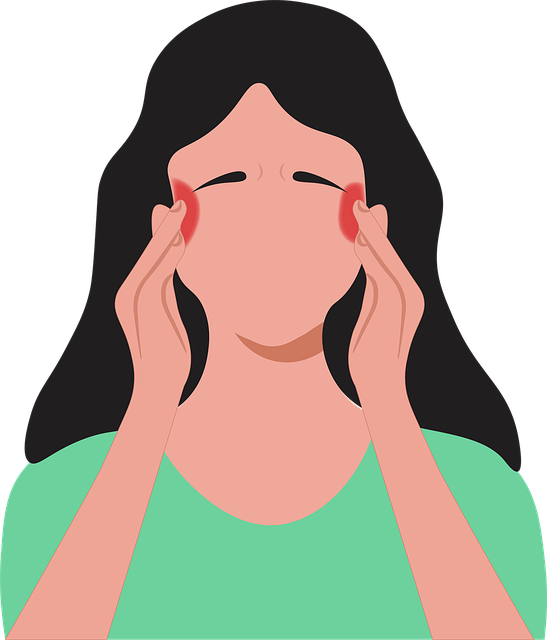Infrared light therapy for muscle healing is a non-invasive approach using red and near-infrared light to stimulate cellular processes, accelerating muscle recovery by targeting mitochondria, reducing inflammation, and promoting collagen synthesis, thus speeding up recovery times and alleviating DOMS symptoms for athletes and active individuals.
“Experience the transformative power of red light therapy for delayed onset muscle soreness (DOMS) relief. This innovative approach, utilizing infrared light, offers a natural and effective way to speed up muscle recovery. Delve into this comprehensive guide to uncover how specific wavelengths of light can alleviate post-exercise discomfort. We explore the science behind infrared light therapy’s ability to reduce inflammation and stimulate healing in sports medicine, providing athletes with a cutting-edge advantage for faster recovery.”
Understanding DOMS: Causes and Symptoms
Delayed onset muscle soreness (DOMS) is a common condition experienced by individuals who engage in physical activities, particularly those involving eccentric exercises like resistance training or new types of workouts. It typically sets in 24 to 72 hours after exercise and is characterized by muscle pain, stiffness, and difficulty moving the affected body parts. The discomfort can range from mild to severe, affecting everyday activities.
The primary cause of DOMS is micro-tears in muscle fibers during intense exercise. These tiny tears lead to inflammation and subsequent fluid buildup around the muscles, causing pain and soreness. Infrared light therapy for muscle healing has emerged as a potential treatment option. By using specific wavelengths of infrared light, this non-invasive approach aims to reduce inflammation, promote healing, and alleviate DOMS symptoms, enabling athletes and fitness enthusiasts to recover faster and get back to their active routines.
Introduction to Red Light Therapy for Muscle Recovery
Red light therapy, also known as low-level laser therapy or infrared light therapy for muscle healing, has gained significant attention in the realm of sports medicine and physical rehabilitation. This non-invasive treatment approach utilizes specific wavelengths of red and near-infrared light to stimulate cellular processes within the body, with a particular focus on accelerating muscle recovery. By penetrating the skin’s depth, these lights target mitochondria, the powerhouses of cells, which play a crucial role in energy production and tissue repair.
In terms of delayed onset muscle soreness (DOMS), red light therapy offers a promising solution. When muscles are subjected to intense exercise or physical strain, they experience microscopic damage, leading to inflammation and pain—the hallmark symptoms of DOMS. Infrared light therapy for muscle healing promotes healing by increasing circulation in the affected areas, reducing inflammation, and accelerating the synthesis of collagen, all of which contribute to faster recovery times and reduced muscle soreness.
How Infrared Light Alleviates Delayed Onset Muscle Soreness
Infrared light therapy for muscle healing has gained popularity as a non-invasive approach to alleviate delayed onset muscle soreness (DOMS). This type of therapy works by emitting specific wavelengths of light that penetrate the skin and target deep tissues, including muscles. The infrared light is absorbed by water molecules within the cells, which generates heat and stimulates cellular activities like protein synthesis and collagen production.
These processes play a crucial role in accelerating muscle repair and reducing inflammation associated with DOMS. By enhancing circulation and promoting the removal of metabolic waste products, infrared light therapy helps alleviate pain and improves recovery time for athletes and individuals experiencing muscle soreness due to intense exercise or physical activity.
Benefits and Applications of Red Light Therapy in Sports Medicine
Red light therapy, also known as low-level laser therapy or photobiomodulation, has emerged as a powerful tool in sports medicine. This non-invasive treatment involves exposing muscles and tissues to infrared light, which is absorbed by cellular components, stimulating various physiological processes that promote healing. One of the key benefits is its ability to reduce delayed onset muscle soreness (DOMS), a common issue among athletes and active individuals.
The applications of red light therapy in sports medicine extend beyond muscle recovery. It can accelerate tissue repair, reduce inflammation, and enhance cellular energy production. By increasing circulation and promoting the growth of new blood vessels, this therapy facilitates faster healing after intense workouts or injuries. Many athletes incorporate infrared light therapy into their post-exercise routines to optimize performance, speed up recovery, and maintain overall well-being.
Red light therapy, with its non-invasive approach using infrared light, emerges as a promising tool for athletes and individuals seeking faster recovery from delayed onset muscle soreness (DOMS). By stimulating mitochondria production and enhancing collagen synthesis, this innovative therapy offers a natural and effective way to alleviate post-workout pain. As research continues to uncover its benefits in sports medicine, incorporating infrared light therapy into recovery routines could be the key to optimising performance and accelerating muscle healing.
